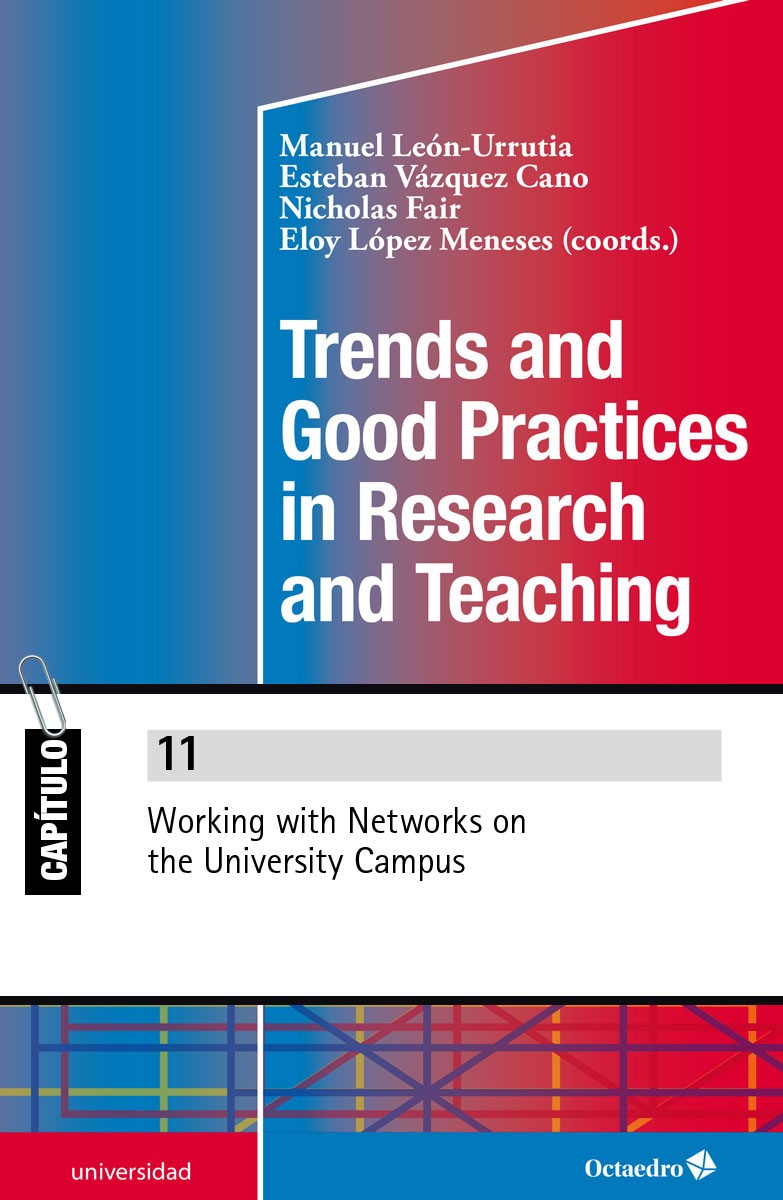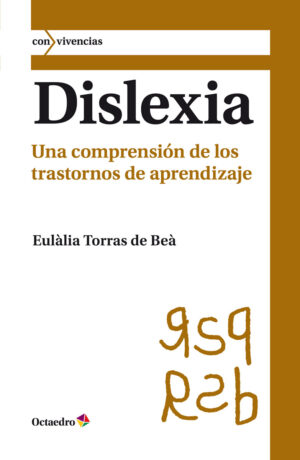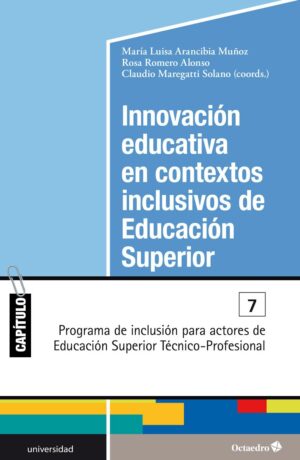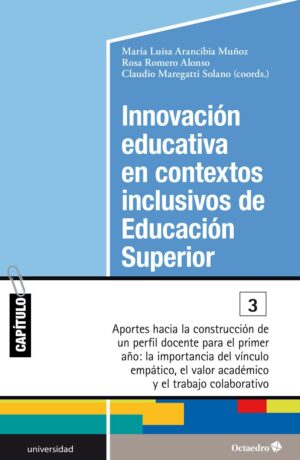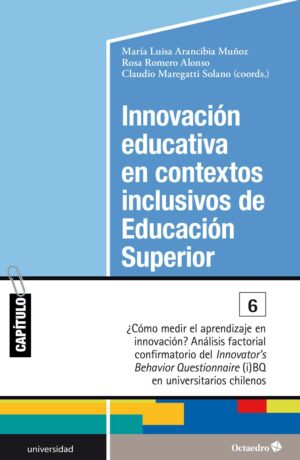FICHA TÉCNICA
Fecha de publicación:
01/01/2020
DOI: https://doi.org/10.36006/16184-11
Título del libro: Trends and Good Practices in Research and Teaching
URL del libro: Trends and Good Practices in Research and Teaching
ISBN:
DOI del libro: https://doi.org/10.36006/16184
Abstract
The universal education is today a reality. Trough the e-learning system we can access to diverse educational system for all the educational level. In this case the technical revolutions have suppose that the higher centre changes their point of view and think how arrived at all the student or possibly pupils. In this case the social networks have became in the best too to get the principal objective of the universities, the communicate with all the student and teachers. In this chapter we presented different social nets for all the world and how the universities made themselves known to the world.
Palabras clave
Autores
Cómo citar
Marín Díaz, V., Muñoz González, J. M., Hidalgo Ariza, M.ª D. (2019). Working with Networks on the University Campus. En León-Urrutia, M., Vázquez Cano, E., Fair, N., López Meneses, E. (coords.) Trends and Good Practices in Research and Teaching. A Spanish-English Collaboration. Barcelona: Octaedro. https://doi.org/10.36006/16184-11
Referencias bibliográficas
- Álvarez, G. (2012). Las nuevas tecnologías en el contexto universitario: sobre el uso de los blogs para desarrollar las habilidades de lectoescritura de los estudiantes, Revista de Universidad y Sociedad del Conocimiento (RUSC), 9 (2), 3-17. Available at <http://rusc.uoc.edu/ojs/index.php/rusc/article/view/v9n2-alvarez/v9n2-alvarez>.
- Barroso, J. (2004). La red como instrumento de búsqueda de información y de comunicación. In Cabero, J. & Romero, R. (dirs.), Nuevas tecnologías en la práctica educativa. Sevilla: Arial, pp. 149-184.
- Bates, A. (2004). La planificación para el uso de las TIC en la enseñanza. In Sangrá, A. & González-Sanmamed, M. (coords.), La transformación de las universidades a través de las TIC: discursos y prácticas. Barcelona: Editorial UOC, pp. 31-51.
- Bidarian, S. H., Bidarian, S., & Davoudi, A. M. (2011). A model for application of ITC in the process of teaching and learning, Procedia Social and Behavioral Sciences, 29, 1032-1041.
- Boschman, J. (2008). Generación Einstein. Más listos, más rápidos y más sociables. Barcelona: Gestión 2000.
- Cabero, J. (2009). Educación 2.0. ¿Marca, moda o nueva visión de la educación? In Castaño, C. (coord.), Web 2.0. El uso de la web en la sociedad del conocimiento. Investigaciones e implicaciones educativas. Venezuela: Universidad Metropolitana (pp. 9-30).
- Cebrián de la Serna, M. (coord.) (2003). Enseñanza virtual para la innovación universitaria. Madrid: Narcea.
- Freire, J. & Brunet, K. S. (2010). Políticas y prácticas para una universidad digital, La Cuestión Universitaria, 6, 85-94.
- García, I., Gros, B., & Noguera, I. (2010). La relación entre las prestaciones tecnológicas y el diseño de las actividades de aprendizaje para la construcción colaborativa del conocimiento, Cultura y Educación, 22 (4), 387-394.
- Gavari, E. (2006). Los principios rectores del espacio europeo de educa-ción superior virtual, Revista Electrónica Teoría Educativa, 7 (2) 185-197.
- Gómez-López, J., & Cano, J. (2011). El pensamiento docente y su influencia en la implantación de las tecnologías de la información y la comunicación en el aula: desafíos y oportunidades, Contextos Educativos, 14, 67-83.
- Holcom, L. B., & Beal, C. M. (2010). Capitalizing on web 2.0 in the social studies context, TechTrends, 54 (4), 28-32.
- Lorenzo, M., Trujillo, J. M., Lorenzo, R., & Pérez, E. (2011). Usos del weblog en la Universidad para gestión de conocimiento y trabajo en red, Pixel Bit, Revista de Medios y Educación, 39, 141-154.
- Meneses, G. (2006). Universidad: NTIC, interacción y aprendizaje, Edutec, Revista Electrónica de Tecnología Educativa, 20, 1-11. Available at <http://edutec.rediris.es/Revelec2/revelec20/meneses20.htm>.
- Muñoz, L. A. (2004). Las tecnologías de la información y la comunicación y la formación en entornos virtuales, Revista Complutense de Educación, 15 (1), 51-74.
- O’Reilly, T. (2005). What is Web 2.0. Design patterns and business models for the next generation of software. Available at <http://oreilly.com/web2/archive/what-is-web-20.html>.
- Prensky, M. (2008). Turning on the lights, Educational leadership Magazine, 65 (6), 40-45. Available at <http://www.ascd.org/publications/educational-leadership/mar08/vol65/num06/Turning-On-the-Lights.aspx>.
- Rieh, S. (2004). On the web at home: information seeking and web searching in the home environment, Journal of the American Society Information Science and Technology, 55 (8), 743-754.
- Thomas, D. A. & Li, Q. (2008). From Web 2.0 to teachers 2.0. Computers in the Schools, 25 (3/4), 199-210.
- Uzunboylu, H., Bicen, H., & Cavus, N. (2011). The efficient virtual learning environment: a case study of web 2.0 tools and windows live spaces, Computers & Education, 56, 720-726.
Mostrar referencias bibliográficas
- Álvarez, G. (2012). Las nuevas tecnologías en el contexto universitario: sobre el uso de los blogs para desarrollar las habilidades de lectoescritura de los estudiantes, Revista de Universidad y Sociedad del Conocimiento (RUSC), 9 (2), 3-17. Available at <http://rusc.uoc.edu/ojs/index.php/rusc/article/view/v9n2-alvarez/v9n2-alvarez>.
- Barroso, J. (2004). La red como instrumento de búsqueda de información y de comunicación. In Cabero, J. & Romero, R. (dirs.), Nuevas tecnologías en la práctica educativa. Sevilla: Arial, pp. 149-184.
- Bates, A. (2004). La planificación para el uso de las TIC en la enseñanza. In Sangrá, A. & González-Sanmamed, M. (coords.), La transformación de las universidades a través de las TIC: discursos y prácticas. Barcelona: Editorial UOC, pp. 31-51.
- Bidarian, S. H., Bidarian, S., & Davoudi, A. M. (2011). A model for application of ITC in the process of teaching and learning, Procedia Social and Behavioral Sciences, 29, 1032-1041.
- Boschman, J. (2008). Generación Einstein. Más listos, más rápidos y más sociables. Barcelona: Gestión 2000.
- Cabero, J. (2009). Educación 2.0. ¿Marca, moda o nueva visión de la educación? In Castaño, C. (coord.), Web 2.0. El uso de la web en la sociedad del conocimiento. Investigaciones e implicaciones educativas. Venezuela: Universidad Metropolitana (pp. 9-30).
- Cebrián de la Serna, M. (coord.) (2003). Enseñanza virtual para la innovación universitaria. Madrid: Narcea.
- Freire, J. & Brunet, K. S. (2010). Políticas y prácticas para una universidad digital, La Cuestión Universitaria, 6, 85-94.
- García, I., Gros, B., & Noguera, I. (2010). La relación entre las prestaciones tecnológicas y el diseño de las actividades de aprendizaje para la construcción colaborativa del conocimiento, Cultura y Educación, 22 (4), 387-394.
- Gavari, E. (2006). Los principios rectores del espacio europeo de educa-ción superior virtual, Revista Electrónica Teoría Educativa, 7 (2) 185-197.
- Gómez-López, J., & Cano, J. (2011). El pensamiento docente y su influencia en la implantación de las tecnologías de la información y la comunicación en el aula: desafíos y oportunidades, Contextos Educativos, 14, 67-83.
- Holcom, L. B., & Beal, C. M. (2010). Capitalizing on web 2.0 in the social studies context, TechTrends, 54 (4), 28-32.
- Lorenzo, M., Trujillo, J. M., Lorenzo, R., & Pérez, E. (2011). Usos del weblog en la Universidad para gestión de conocimiento y trabajo en red, Pixel Bit, Revista de Medios y Educación, 39, 141-154.
- Meneses, G. (2006). Universidad: NTIC, interacción y aprendizaje, Edutec, Revista Electrónica de Tecnología Educativa, 20, 1-11. Available at <http://edutec.rediris.es/Revelec2/revelec20/meneses20.htm>.
- Muñoz, L. A. (2004). Las tecnologías de la información y la comunicación y la formación en entornos virtuales, Revista Complutense de Educación, 15 (1), 51-74.
- O’Reilly, T. (2005). What is Web 2.0. Design patterns and business models for the next generation of software. Available at <http://oreilly.com/web2/archive/what-is-web-20.html>.
- Prensky, M. (2008). Turning on the lights, Educational leadership Magazine, 65 (6), 40-45. Available at <http://www.ascd.org/publications/educational-leadership/mar08/vol65/num06/Turning-On-the-Lights.aspx>.
- Rieh, S. (2004). On the web at home: information seeking and web searching in the home environment, Journal of the American Society Information Science and Technology, 55 (8), 743-754.
- Thomas, D. A. & Li, Q. (2008). From Web 2.0 to teachers 2.0. Computers in the Schools, 25 (3/4), 199-210.
- Uzunboylu, H., Bicen, H., & Cavus, N. (2011). The efficient virtual learning environment: a case study of web 2.0 tools and windows live spaces, Computers & Education, 56, 720-726.
